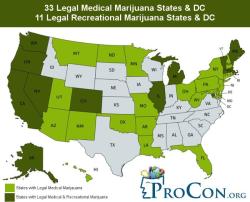What are the most common allergies?
The most common allergies, also known as common allergens or allergic triggers, are substances that can elicit allergic reactions in susceptible individuals. These allergies can range from mild to severe and may affect various systems in the body. Here are some of the most common allergies:
Pollen Allergy (Hay Fever or Allergic Rhinitis):
- Allergic reactions to pollen from trees, grasses, and weeds.
- Symptoms include sneezing, runny or stuffy nose, itchy or watery eyes, and throat irritation.
- Common during specific seasons (e.g., spring for tree pollen, summer for grass pollen).
Dust Mite Allergy:
- Allergic reactions to tiny, microscopic organisms called dust mites found in household dust.
- Symptoms include sneezing, runny or stuffy nose, and asthma-like symptoms.
Pet Allergy:
- Allergic reactions to proteins found in the skin cells, saliva, and urine of cats, dogs, and other pets.
- Symptoms include sneezing, runny or stuffy nose, itchy eyes, and skin rash.
Mold Allergy:
- Allergic reactions to mold spores that are found both indoors and outdoors.
- Symptoms may include sneezing, coughing, itchy or watery eyes, and asthma exacerbation.
Insect Sting Allergy:
- Allergic reactions to stings or bites from insects such as bees, wasps, hornets, or fire ants.
- Symptoms can range from localized swelling and pain to severe allergic reactions, including anaphylaxis.
Food Allergy:
- Allergic reactions to specific proteins in certain foods.
- Common food allergens include peanuts, tree nuts, milk, eggs, soy, wheat, fish, and shellfish.
- Symptoms vary but may include hives, itching, swelling, abdominal pain, diarrhea, and in severe cases, anaphylaxis.
Latex Allergy:
- Allergic reactions to proteins found in natural rubber latex products, such as gloves, balloons, and medical devices.
- Symptoms may include skin irritation, hives, and in severe cases, anaphylaxis.
Drug Allergy:
- Allergic reactions to medications, which can be triggered by various drugs, including antibiotics (e.g., penicillin), NSAIDs, and others.
- Symptoms range from mild skin rashes to severe anaphylaxis.
Allergic Contact Dermatitis:
- Skin allergies triggered by contact with substances like poison ivy, poison oak, metals (e.g., nickel), and certain chemicals.
- Symptoms include redness, itching, swelling, and blistering of the skin.
Asthma Allergy (Occupational Asthma):
- Allergic reactions triggered by exposure to allergens in the workplace, such as dust, chemicals, or animal proteins.
- Symptoms may include wheezing, coughing, and shortness of breath.
It's important to note that individuals can have allergies to a wide range of other substances not listed here, and allergies can vary in their severity. Allergies are typically diagnosed through clinical evaluation, including medical history, physical examination, and sometimes allergy testing (e.g., skin prick tests or blood tests). Management of allergies may involve allergen avoidance, medications (e.g., antihistamines, epinephrine for severe reactions), and allergen immunotherapy (allergy shots) for certain allergies. If you suspect you have allergies, it's advisable to consult with a healthcare professional or allergist for proper evaluation and management.
Common Allergies: Exploring the Most Prevalent Allergic Reactions
Allergies are a common health problem, affecting an estimated 30-40% of the population worldwide. The most common allergies are food allergies, inhalant allergies, insect sting allergies, drug allergies, and skin contact allergies.
Food allergies are allergic reactions to food proteins. The most common food allergens are milk, eggs, peanuts, tree nuts, soy, wheat, fish, and shellfish. Food allergies can cause a variety of symptoms, including hives, itching, swelling, nausea, vomiting, diarrhea, and difficulty breathing. In severe cases, food allergies can cause anaphylaxis, a life-threatening allergic reaction.
Inhalant allergies are allergic reactions to allergens that are inhaled into the lungs. The most common inhalant allergens are pollen, dust mites, mold, and pet dander. Inhalant allergies can cause a variety of symptoms, including sneezing, runny nose, itchy eyes, and coughing. In severe cases, inhalant allergies can cause allergic asthma, a chronic inflammatory lung disease.
Insect sting allergies are allergic reactions to the venom of stinging insects, such as bees, wasps, yellow jackets, and fire ants. Insect sting allergies can cause a variety of symptoms, including pain, swelling, redness, itching, and difficulty breathing. In severe cases, insect sting allergies can cause anaphylaxis.
Drug allergies are allergic reactions to medications. The most common drug allergens include penicillin, other antibiotics, and aspirin. Drug allergies can cause a variety of symptoms, including hives, itching, swelling, nausea, vomiting, diarrhea, and difficulty breathing. In severe cases, drug allergies can cause anaphylaxis.
Skin contact allergies are allergic reactions to allergens that come into contact with the skin. The most common skin contact allergens include nickel, latex, and fragrances. Skin contact allergies can cause a variety of symptoms, including hives, itching, redness, and blisters.
Allergy Frequency: Identifying the Most Prevalent Allergies
The prevalence of allergies varies depending on the type of allergy and the geographic location. However, some of the most prevalent allergies include:
- Food allergies: Food allergies affect an estimated 5-8% of children and 3-4% of adults in the United States.
- Inhalant allergies: Inhalant allergies affect an estimated 20-30% of the population worldwide.
- Insect sting allergies: Insect sting allergies affect an estimated 1-3% of the population in the United States.
- Drug allergies: Drug allergies affect an estimated 1-3% of the population in the United States.
- Skin contact allergies: Skin contact allergies affect an estimated 7-10% of the population in the United States.
If you suspect that you or someone you know has an allergy, it is important to see a doctor or allergist for diagnosis and treatment.












